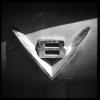Originally posted by Wolf
I think the biggest problem with 2-strokes is fuel consumption (AFAIK, the 'ideal' cylinder size of some 250cc is same for both 2T and 4T engines)... Anyways if Germans could build 2T diesel aircraft engine, surely 2T engines are good enough to power racing cars.
Wolfie, don't know about these aircraft engines, but I bet these were 2-stroke Diesel
turbocharged ones, which is altogether a very different animal! Turbocharging will address the problem of efficiency in big cylinders, because it "blows" the combustion chamber clean before new fuel is injected. Doesn't work the same if you have normally aspirated, 2-stroke Otto engines with large cylinders!
Originally posted by Wolf
I think it's shame ex-500cc bike class has, or will next year, outlaw 2T engines, since they are really pretty little things- all kinds ov valves ('regular'*, reed, rotary), plus weird configurations like big-bang engines...
I second your notion - I stopped watching motorcycle racing when the four-strokes were introduced. They say MotoGP is exciting these days, they don't know how it was before!

__________________
If you prick us, do we not bleed?
If you tickle us, do we not laugh?
If you poison us, do we not die?
And if you wrong us, shall we not revenge?
If we are like you in the rest
We will resemble you in that
If a Jew wrong a Christian
What is his humility?
Revenge!
If a Christian wrong a Jew
What should his sufferance be by Christian example?
Why, revenge!
The villany you teach me I will execute
And it shall go hard but I will better the instruction























